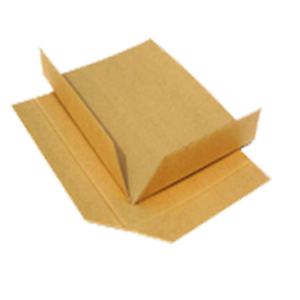Slip sheets, also known as pallet sheets or transfer sheets, are flat, thin, rectangular-shaped materials used in material handling and shipping industries. They are an alternative to traditional wooden or plastic pallets for transporting and stacking goods.
Efficient Alternative to Pallets
The pallet sheets are made of cardboard, plastic, or corrugated fiberboard and come in various sizes to accommodate different loads.
They are designed to be placed between layers of products, acting as a protective layer and facilitating movement within a warehouse or during transportation. Slip sheets eliminate the need for pallets and reduce packaging materials’ overall weight and cost. They are particularly useful when shipping lightweight or uniform goods, such as bags, boxes, or cartons.
Space Saving Packaging Solution
Forklifts or other handling equipment need to be equipped with slip sheet attachments to grip the slip sheet and allow it to be lifted, pulled, or pushed as required.
Slip sheet systems provide an efficient and space-saving solution for loading and unloading goods, especially when space is limited or when exporting products where pallets may not be readily available or compatible with local standards.
Cost Savings: Slip sheets offer significant cost advantages compared to pallets. They are inexpensive to purchase and can be disposed of after each use, eliminating the need for tracking or repairs. This eliminates the costs associated with tracking wooden pallets, resolving issues with missing pallets, and paying for pallet return or repair.
Optimized Warehouse Space: The slim nature of the slip sheets allows for efficient use of storage space. They occupy considerably less storage area than pallets, enabling vertical stacking and maximizing warehouse space utilisation. This allows for greater storage capacity and more efficient organization of loads.
Reduced Transportation Costs: Pallet sheets are lightweight, reducing storage space requirements. This weight reduction allows more goods to be loaded, optimizing transportation capacity and reducing transportation costs.
Enhanced Hygiene: Slip sheets contribute to a cleaner warehouse environment by minimizing the risk of rodent and insect infestation. Unlike pallets that can serve as habitats for pests due to their depth, Slip Sheets are depth-free, reducing the likelihood of pest infestation. Additionally, as Slip Sheets can be discarded after each use, the risk of cross-contamination from other warehouses or previous users is eliminated.
Environmental Friendliness: Pallet sheets are environmentally friendly as they are 100% reusable and recyclable. Unlike wooden pallets that often end up in landfills when disposed of, slip sheets can be recycled, contributing to sustainability efforts and minimizing waste.
To effectively utilize slip sheets in material handling and shipping, consider the following factors:
- Determine the Proper Unit Load: Before selecting a slip sheet, it is important to assess the specifications of the product being transported. Understanding the unit load’s weight, dimensions, and stability requirements helps choose the most suitable slip sheet for the job.
- Select the Appropriate Slip Sheet: The choice of slip sheet should align with the characteristics of the unit load. Finding the ideal slip sheet enables users to load, unload, and transport goods safely. Material composition (cardboard, plastic, or corrugated fiberboard) and size should be carefully considered.
- Ensure Proper Equipment and Training: Having the necessary equipment, such as forklifts or handling machinery, equipped with slip sheet attachments. Adequate training should be provided to operators to ensure they understand how to handle the equipment properly and securely.
- Understand the Functions of the Slip Sheet: Having a comprehensive understanding of how to slip sheets function and how they must complement the material handling equipment being used is important. This knowledge ensures the efficient and effective use of slip sheets, minimizing the risk of damage or accidents during handling and transportation.
- Consider Unloading and Storage Facilities: Before implementing slip sheets, assessing the receiver’s unloading and storage facilities is advisable. Determining whether they have the appropriate equipment, tools, and storage areas compatible with slip sheets helps ensure a seamless transition and efficient operations upon delivery.
Slip Sheets: Download


